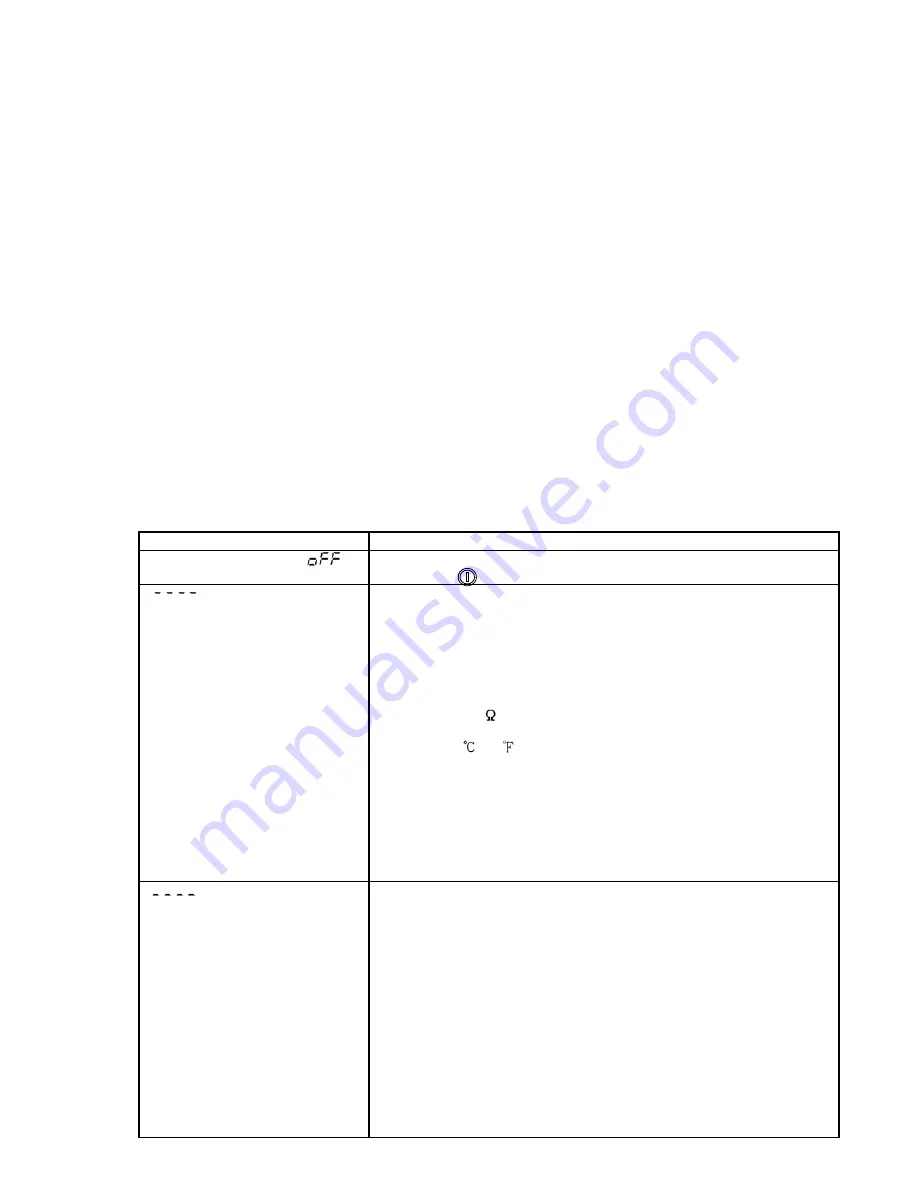
(1) Reading and setting of the main setting value, PID values and each setting value
(2) Reading of the input value and action status
(3) Change of the functions
Communication interface
: Based on EIA RS-485
Communication method
: Half-duplex start stop synchronous
Data transfer rate
: 2400, 4800, 9600, 19200bps (Selectable by key)
Parity
: Even, Odd and No (Selectable by key)
Stop bit
: 1 and 2 (Selectable by key)
Communication protocol
: IMO protocol, Modbus RTU, Modbus ASCII (Key selectable)
Number of units connectable : Maximum 31 units to 1 host computer
Communication error detection: Double detection by parity and checksum
Digital external setting
: The SV from the programmable controller (with the option SVTC) can be
digitally transmitted to the TP40A (with the option C5).
(The Setting value lock of the TP40A must be set to Lock 3)
When the data from the programmable controller exceeds the SV high
limit or low limit value, the TP40A ignores the value, and performs the
control with the former value.
The control desired value adds SVTC bias value to the value received
by the SVTC command.
SV1/SV2 external selection (Option code: SM)
SV1 or SV2 can be selected by the external contact.
When this option is added, the option [C5] cannot be added with it.
Contact open between 13-14: SV1, Contact closed between 13-14: SV2
Contact current: 6mA
10. Troubleshooting
If any malfunctions occur, refer to the following items after checking the power supply to the controller.
10.1
Indication
Problem
Presumed cause and solution
PV display is indicating [
].
• Control output OFF function is working.
Press the
key for approx. 1 second to release the function.
[
] is blinking on the PV
display.
• Thermocouple, RTD or DC voltage (0 to 1V DC) is burnt out.
Change each sensor.
How to check sensor burnout
[Thermocouple]
If the input terminal of the instrument is shorted, and if nearby
room temperature is indicated, the instrument should be normal
and sensor may be burnt out.
[RTD]
If approx. 100 of resistance is connected to the input terminals
between A-B of the instrument and between B-B is shorted, then
if nearby 0
(32 ) is indicated, the instrument should be normal
and sensor may be burnt out.
[DC voltage (0 to 1V DC)]
If the input terminal of the instrument is shorted, and if scaling low
limit value is indicated, the instrument should be normal
and the signal wire may be burnt out.
• Is the input terminal of thermocouple, RTD or DC voltage (0 to 1V
DC) securely mounted to the instrument input terminal?
Connect the sensor terminals to the instrument input terminals securely.
[
] is blinking on the PV
display.
• Check if input signal source for DC voltage (1 to 5V DC) or DC
current (4 to 20mA DC) is normal.
How to check each signal wire
[DC voltage (1 to 5V DC)]
If the input to the input terminals of the instrument is 1V DC and
if scaling low limit value is indicated, the instrument should be
normal and the signal wire may be disconnected.
[DC current (4 to 20mA DC)]
If the input to the input terminals of the instrument is 4mA DC and
if scaling low limit value is indicated, the instrument should be
normal and the signal wire may be disconnected.
• Is input signal wire for DC voltage (1 to 5V DC) or DC current (4 to
20mA DC) securely connected to the instrument input terminals?
Connect the signal lead wire to the instrument input terminals securely.
• Is polarity of thermocouple or compensating lead wire correct?
Do codes (A, B, B) of RTD agree with the instrument terminals?
19


































